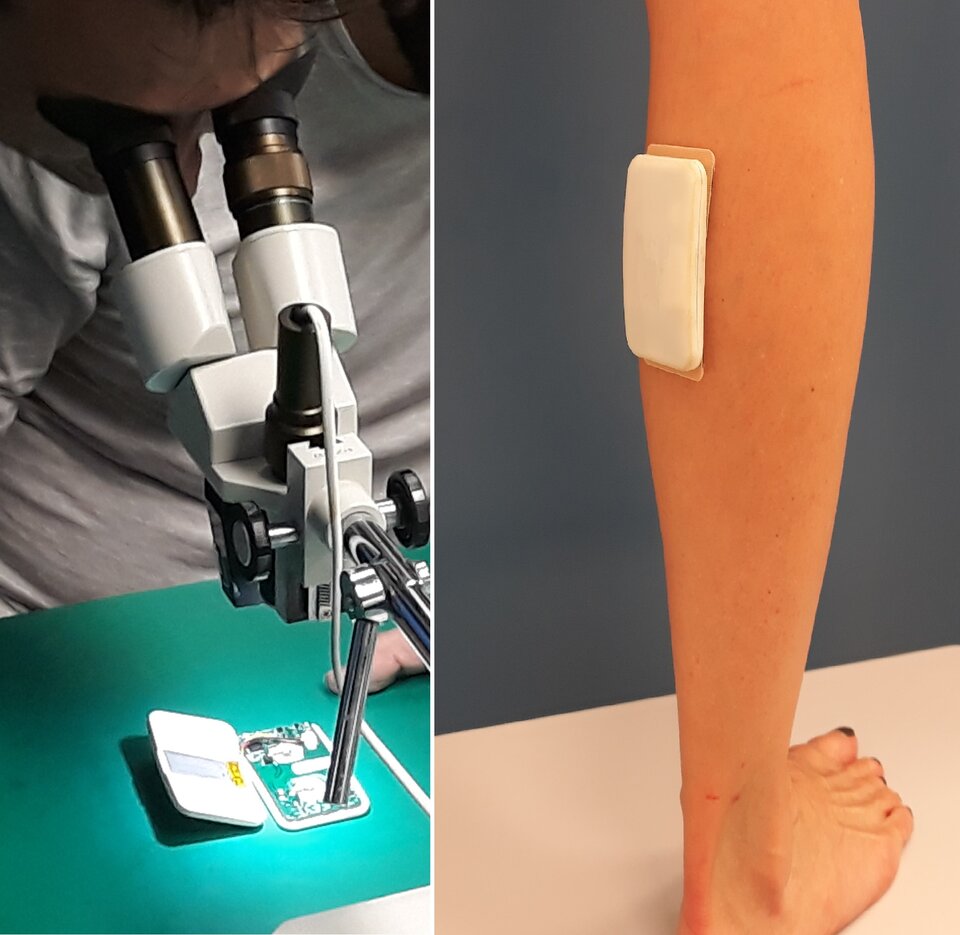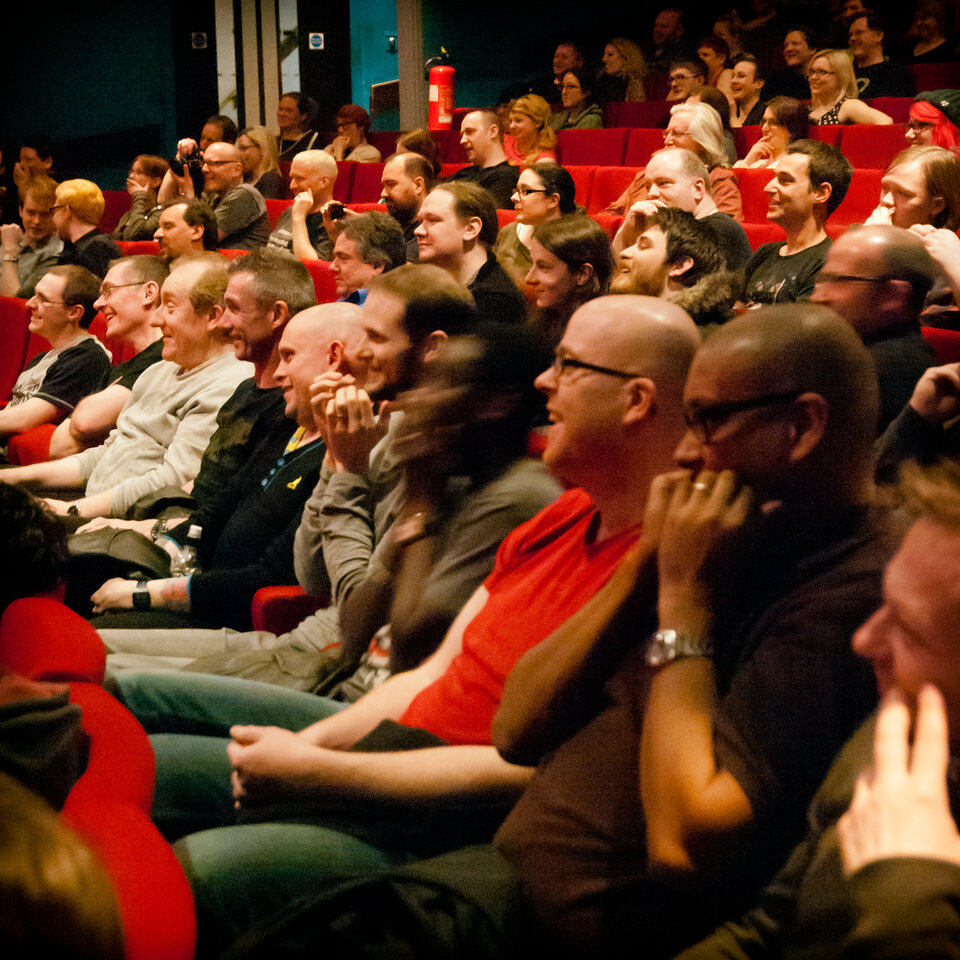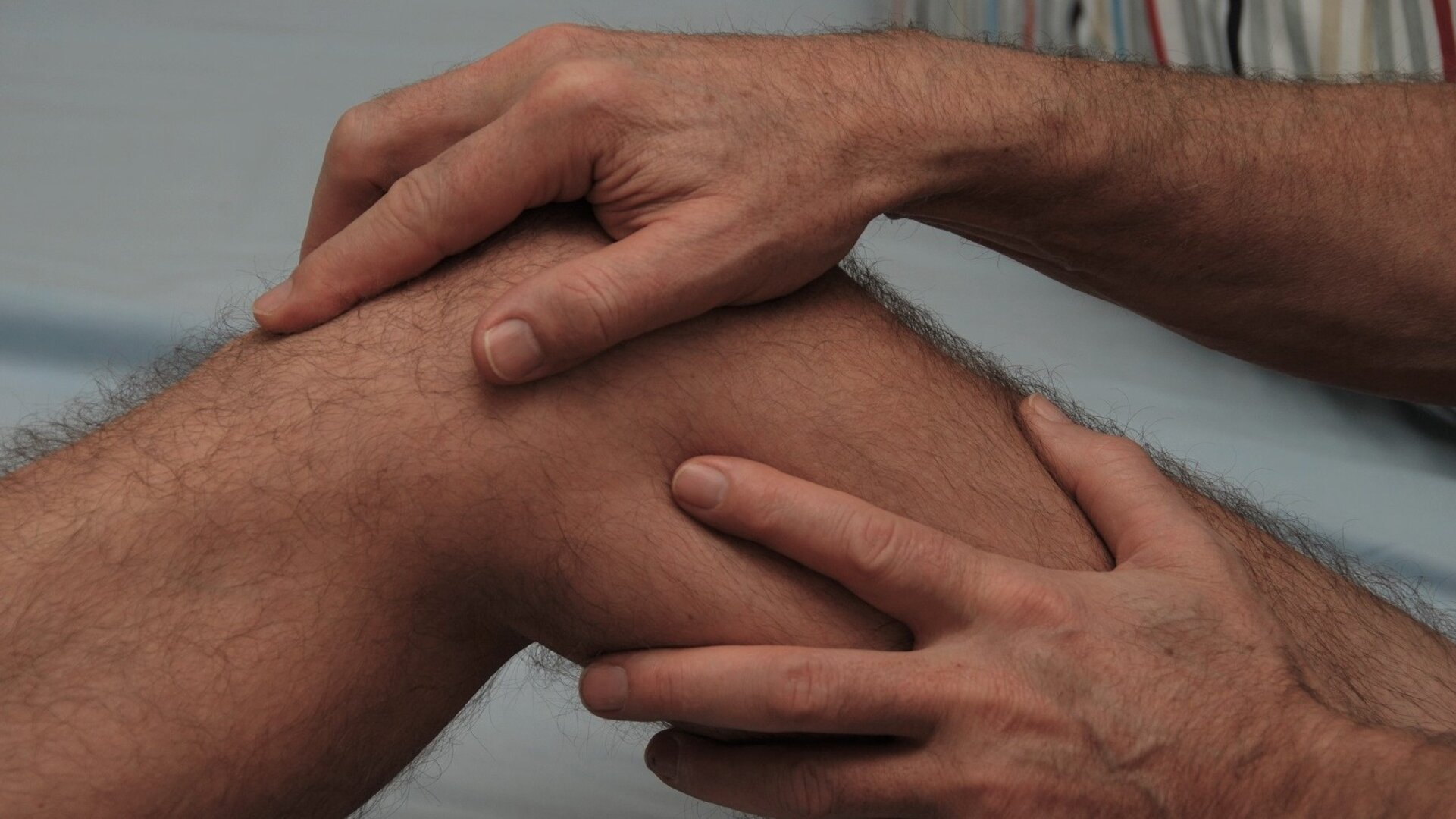Calm your restless legs with a solution from space
Dutch start-up company Relegs has developed a medical device for instantaneous relief of discomfort caused by Restless Legs Syndrome (RLS). The breakthrough uses electrical contra stimulation to override the urge to move one’s legs. Located in ESA’s Business Incubation Centre in Noordwijk, Relegs will soon have the first prototype ready for clinical trials.
RLS, also known as Willis-Ekbom disease, is a condition of the nervous system.
It is characterized by an irresistible urge to move the legs to stop unpleasant sensations, which is frequently described as a creeping, crawling feeling. Often patients remain desperate to find a solution for their discomfort and for many it reduces significantly the quality of life.

“It is estimated that 5-10% of the population worldwide is affected somehow, even if many have never heard about restless legs,” says Casper van Waveren, the Medical Director at Relegs who holds a medical degree and himself suffers from RLS.
He adds, “I wanted to develop a non-pharmacological tool offering additional efficacy and fewer side effects to improve the therapeutic repertoire for RLS.”
Now Relegs is hosted at ESA Business Incubation Centre Noordwijk, part of ESA’s Business Applications and Space Solutions Programme, where their get support to turn their idea into a viable business.
The exact cause of RLS remains unknown and to date there is no cure, only treatments directed at symptom relief.
Light example of Restless Leg Syndrome
Existing pharmacotherapy can only target specific RLS patients, is not practical in every RLS situation and is not popular due to related adverse effects.
Casper reached out to Erik van der Heide, a space engineer who is now Relegs` Managing Director. They started to idenfity the user requirements for such a tool, and together they founded Relegs.
Space methodology and YES2 experience opened a solution

Without any experience in medical devices, Erik adopted the systematic design methodology he had learned on earlier space projects.
He involved a company called Emxys that he had previously contracted for developments on the YES2 satellite, as he knew of their latest developments on power protection for a commercial nanosatellite. The same knowledge and design principles were used to develop a low power, miniature and above all safe and reliable solution for the Relegs device.

“Our innovative device needs to be placed on the calf, where it activates sensory nerve fibres. This provides counter stimulation to the brain, therewith overriding the unpleasant sensations and the urge to move the legs,” explains Casper.
Erik adds, “We have taken into account the different situations and their ergonomics, like those occurring when in bed, in the theatre or on air planes.
“By following the techniques and practices for implementing space technology, we have been able to develop a robust, non-pharmacological, medical Class IIa device with high safety and reliability.”
”Our device is the first non-pharmacological solution to relieve RLS symptoms in every RLS triggering situation,” says Casper.
The device is a battery powered miniature wireless device, ergonomically designed and comfortable to wear in every RLS triggering situation, at home (in bed, on the sofa), in public domain (in cinemas, in the theater, in meetings) and when on travel (in airplanes, cars or buses, on trains). It may be worn under clothing - even tight clothing - and is controlled by tapping on the device, even through the clothing, without anyone noticing.

”I have been using the prototype myself over the last months and it has changed my life," adds Casper
"During nights I don’t have to get out of bed anymore and for the first time in years I visited the cinema with my kids and enjoyed watching, without being concerned about my restless legs”.
ESA BIC Noordwijk boosted the development
“The ESA BIC provides an inspiring and exciting entrepreneurial environment and network to complement competences and resources that we lacked,” explains Erik.
“In our case, it was the access to an excellent patent attorney and exposure to a group of investors called SBIC Participants, who scout space technology spin-offs and are enabling us to kick-start our business.
“We have just passed all product safety related tests and reviews for the CE Certification of our medical device.”

A first production batch to perform a clinical trial is now being built at Relegs` supplier, Venne Electronics in the Netherlands.
Invitations to subjects for the clinical trial will be published on the RELEGS website after final approval of the study plan by the Medical Ethical Commission.
After the clinical trial to assess the effectiveness of the device, Relegs aim to start their market introduction in the Netherlands.
About ESA’s Business Applications and Space Solutions
ESA’s Business Applications and Space Solutions programme has a network of 20 ESA Business Incubation Centres, 15 ESA Innovation Partners and 14 ESA Ambassadors throughout Europe. It co-funds projects and start-ups, while also offering technical and business support to companies that seek to deliver rapid innovation and to raise private investment.
Overall ESA spends €400 million a year on strengthening the competitiveness of European and Canadian companies in the global markets for both satellite communications andr downstream applications.
The 20 ESA Business Incubation Centres (ESA BICs) form the largest ecosystem in the world for space-related entrepreneurship and have fostered over 700 start-ups throughout Europe. Spread across some 60 cities in 17 countries, more than 300 start-ups are currently under the two-year business incubation development booster programme, with another 180 joining yearly.



